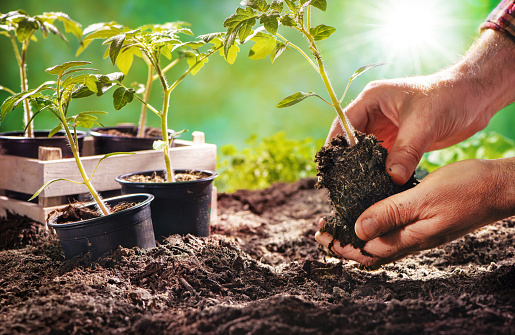
Table of Contents
Maintaining and improving the garden soil is not always very simple. However, the garden mustn’t be neglected, even during the winter months. Because, otherwise, biological activities slow down and the soil loses all forms of life, hibernating throughout the winter, or worse, dying.
It is important to continue with periodic cleaning, take care of plants and flowers to prevent them from being damaged by the cold due to frosts.
Why It Is Important to Take Care of the Garden in Winter
First of all, let’s start with the reasons for taking care of the winter garden.
In general, during the winter, the ground freezes and the grass becomes more fragile. When not cared for, the soil could freeze to death during hibernation. So it is necessary to take some precautions to prevent the garden from being damaged.
Also, since the garden is the aesthetic center of your home, it is essential to keep it up to the guests. It is not a question of making extraordinary interventions, but it is advisable to always keep it clean and tidy so as not to frustrate all the efforts during the previous beautiful seasons and always have a presentable entrance.
Freeing the garden from weeds and leaves fallen from the surrounding trees and carried by the wind is essential: this is why the flower beds must always be cared for and pruned as in spring.
Looking beyond the aesthetic factor, working in winter to keep your garden at its best means not having to start all over again once the temperatures get milder. A little constant maintenance will therefore result in considerable savings and a simplified task when the warm season arrives.
Steps to Improving the Soil in Winter
November is a rather hollow month in the vegetable garden because, unless you live in a very lenient region, the time is more for “cleaning” than for sowing. This is the best time to take care of the soil and prepare the soil for a long restful sleep.
Pre-winter Fertilization
As mentioned, it is advisable to avoid fertilizing the garden in winter. However, during the autumn, when the last fertilization is carried out, it would be advisable to use a solution with a high potassium content.
Potassium is really good for the garden because it allows you to increase the thickness of the blades of grass and helps the garden to fight the cold.
Not only that: it can improve and prolong the color of the garden overtime during winter frosts. It improves the development of the grass even during conditions of thermal stress. It strengthens the resistance of the garden to fungal diseases.
To know what type of fertilizer to use and to know the right dosage, it is good to opt for a professional slow-release fertilizer that allows you to spray the garden in winter, thus preparing it for the cold season in the best possible way. In addition, biostimulant treatments with algae can also be conducted. This can help the growth of the turf and also stimulate the resistance of the grass.
You can also opt for compost. Spilled compost, ripe or semi-ripe, does not have to be buried deep but simply spread on the ground. This organic matter is not intended directly for the earth, but to nourish the living beings which inhabit it. And believe us, they know how to find it well and other animals in the ecosystem also help. Worms work while eating and eat while working. And as long as there is food on the table, they continue to dig the ground, taking the compost and vermicomposted matters down with them.
Even the garden cut in the winter must be taken care of. The grass in autumn and winter should rise by about 20% in height to improve its capacity to produce energy. However, it must not exceed 9 cm in height. In this case, cutting the garden becomes necessary.
Garden Care in Winter
Below are steps to carry out just before and during winter.
1. Harvest the Last Vegetables and Make Way for the Vegetable Garden
While harvesting, rather than pulling the plants out, cut them off at their base, leaving the roots in the ground. They will decompose on their own and provide nutrients such as nitrogen for legumes or Fabaceae such as beans.
2. Mulch the Soil
When continuously mulched, the vegetable garden soil retains good flexibility. The mulches protect the soil from the snow during the cold winter while they’re dormant.
3. Remove Stagnant Water
Stop watering and make sure there is no stagnant water that can drown the garden and cause it to yellow. If necessary, take a snow shovel and apply sand over the stagnant water to allow them to dry faster. Fortunately, this informative article contains an analysis of the best snow shovel brands and models on the market. You’ll need it for a slew of other activities with the snow in winter. Even the cutting of the garden in winter must be suitably adapted. Better to keep the grass a little higher and thus allow greater protection from the cold.
4. Watch Out for Moss
During the winter, one of the biggest risks for the garden is the formation of moss. Moss generally proliferates in areas where there is not much light, so if the garden is in the shade, you can consider thinning of the plants to allow the sun’s rays to illuminate it.
Garden Care in Late Winter
When winter is coming to an end, the time has come to start work on the turf, if necessary by means of aeration. Aeration involves creating small holes in the ground to be filled with sand and earth to let the earth breathe.
In February, it is time to start cleaning the garden by collecting dead vegetation, broken branches, fallen leaves. Then while waiting for March and April to start sowing in view of the new blooms, you can opt for a seedbed or silica to lighten the soil. At this point, you can start thinking about what to plant in the garden. For example, from calendula to carnation, there are so many types of plants that can revive the garden in early spring.
Practical Tips on How to Take Care of the Winter Garden
First of all, you have to know that there are some useful tips for taking care of the garden in winter. These must be followed to prevent the garden from being damaged.
- First, you need to make sure that the garden receives light and that it breathes. For this reason, it is necessary to continually eliminate the layer of leaves that settles on the surface and which can suffocate the grass. Not only that, but rotting leaves with moisture can also cause some turf disease.
- Next are the flowers. To prepare the flowers for winter, it is necessary to protect them from frost.
- The last planting operations must be done in December, such as in the case of roses or bulbous flowers like tulips.
- For flower beds and the soil in general, winter is the perfect time for organic fertilization, a type of intense nourishment that prepares the soil for spring sowing.
- The flower beds must be protected by preparing a mulch, after having performed mineral and organic fertilization.
- Pruning of trees and shrubs must continue, as needed, even in winter.
- Fruit plants should be treated like flowers to prepare for spring, remembering to sweep the last fallen leaves well with a rake, so that they do not create a damp layer on the garden, affecting its look and stimulating the creation of an environment conducive to the spread of bacteria.
- For the care of the turf, the works to be carried out in the winter period include scarification, when seeds are left outside during the cold winter.
- For the maintenance of the garden, ensure aeration, that is to create holes in the ground that will be subsequently filled with sand and earth.
- The garden should never be walked on in winter especially if it is covered in snow. Otherwise, the blades of grass can receive severe trauma and consequently never grow back. To clean the garden in winter, it is sufficient to use a rake and only make gentle movements so as not to damage the grass that is under the layer of leaves, which will be very delicate at this time due to frost.
- Furthermore, the shaded areas of the garden that can favor the development of fungi and infections should be reduced as much as possible.
- During the cold season, it is not necessary to continue fertilizing the garden. You have to stop this at the end of autumn and start again in spring. If you fertilize the grass in winter, the real risk is that it can be damaged by the cold.
Conclusion
The ground and the plants observe what we can call vegetative rest during winter. The plants need to rest and so does the soil, to prepare for the new cycle of spring. But the garden must be cared for and treated even during the cold season. The maintenance of the garden must be continued even when the temperatures drop. In the autumn period, it is advisable to try to clean the garden and prepare it for the colder months.
















